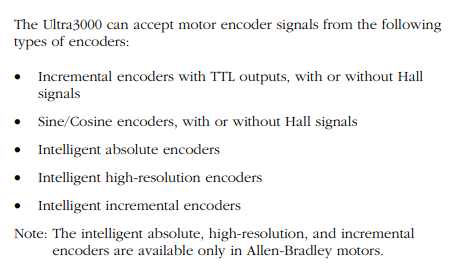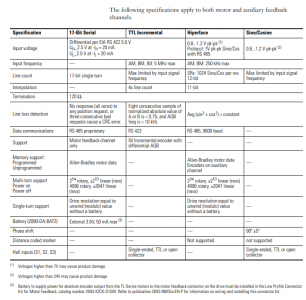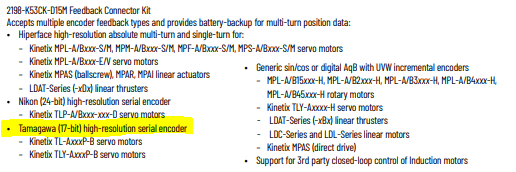- Joined
- Mar 26, 2018
- Messages
- 2,724
Well, first bit of bad news. From an earlier post I mentioned the J6 motor was binding up and was extremely hard to rotate by hand. These should be buttery smooth. Anyways, I just learned that the motor is fragged. No hope of saving it.
I used a bearing puller to gently remove the stuck pulley.
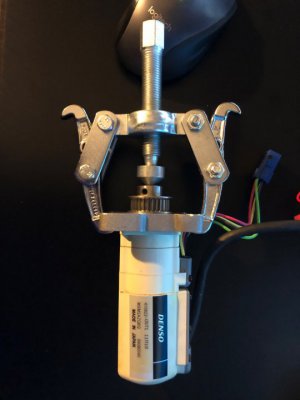
There was some dark grit right at the rubber shaft seal, but nothing concerning. The seal surface was in good condition. Some grease behind the seal likely improves water protection.
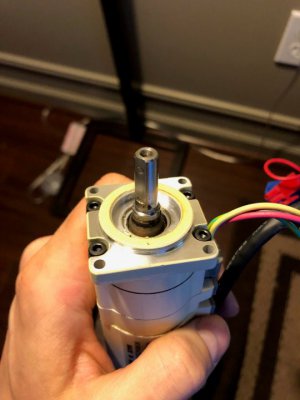
Pulling the front casting revels the stator windings. The front bearing spins smoothly.
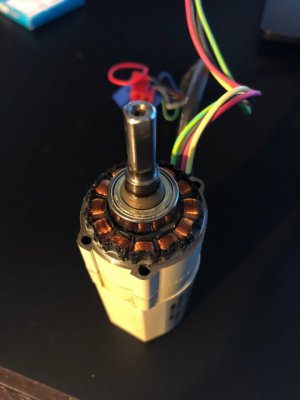
Removing the rest of the covers allowed me to see what was going on inside. At this point I suspected a fully seized rear bearing.
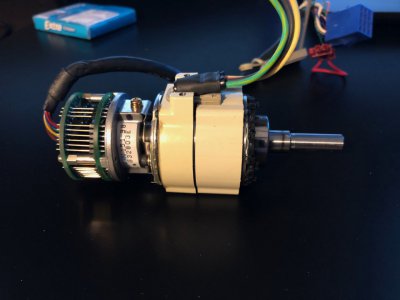
But alas, removing the stator coils revealed a shattered rare earth permanent magnet on the rotor. I have no way to repair this. There is no sign of impact to the motor or a crash of the robot. I can only guess that this was a defective motor or the motor ran away at a high overspeed and destroyed the rotor with centrifugal forces.
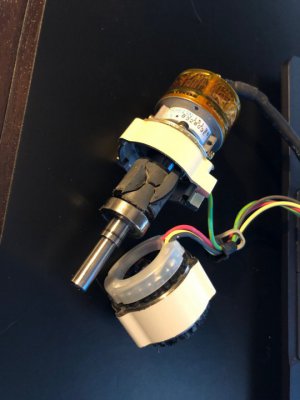
So the J6 motor is trash. My options are to replace with an identical part, or to replace it with a comparable servo motor like an Allen Bradley TLY series motor with -B feedback (Tamagawa 17-bit serial).
If I want to run this on the original control, I think I will need to find a 1:1 replacement. Sucks...
I used a bearing puller to gently remove the stuck pulley.

There was some dark grit right at the rubber shaft seal, but nothing concerning. The seal surface was in good condition. Some grease behind the seal likely improves water protection.

Pulling the front casting revels the stator windings. The front bearing spins smoothly.

Removing the rest of the covers allowed me to see what was going on inside. At this point I suspected a fully seized rear bearing.

But alas, removing the stator coils revealed a shattered rare earth permanent magnet on the rotor. I have no way to repair this. There is no sign of impact to the motor or a crash of the robot. I can only guess that this was a defective motor or the motor ran away at a high overspeed and destroyed the rotor with centrifugal forces.

So the J6 motor is trash. My options are to replace with an identical part, or to replace it with a comparable servo motor like an Allen Bradley TLY series motor with -B feedback (Tamagawa 17-bit serial).
If I want to run this on the original control, I think I will need to find a 1:1 replacement. Sucks...
Last edited:


